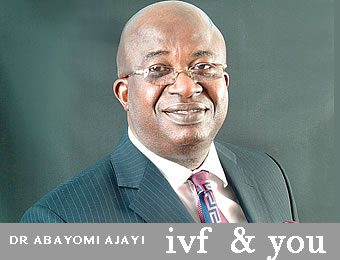In IVF eggs and sperms are needed. The eggs are collected from the woman’s ovaries which are the factories that produce the eggs. In the natural situation, usually every month a certain number of eggs begin to grow in the woman’s ovaries. The eggs are contained in structures called follicles.
Every woman has two ovaries. One of the follicles begins to grow faster and continues to grow until it releases the egg contained in it (this release is called ovulation) in readiness to meet the sperm in the fallopian tube which comes via intercourse with her partner at or around this time of ovulation.
The other eggs die off. In IVF drugs are used to prevent those other eggs that would have died off to survive. So new or artificial eggs are not being manufactured or created (It is still the woman’s eggs that are used) neither are egg stores being depleted as the eggs recruited for IVF would have died anyway.
The other difference is that instead of allowing ovulation inside her the process is timed in such a way that just before ovulation the eggs are collected from her ovaries by a special technique called egg retrieval after giving her some mild sedation to sleep off lightly so as not to feel any pain. Open surgery is not needed to collect the eggs. The eggs are collected through her vagina with a special needle guided by an ultrasound machine so we can safely and carefully guide the needle to the ovaries and collect the eggs.
The eggs cannot be seen with the naked eyes. They are contained in special fluids within rounded or oval structures called follicles within the ovaries. Each follicle is expected to contain an egg. What is collected is the fluid and this is examined by the expert called the embryologist to determine the number and quality of eggs collected. It is not all the time that all the follicles have eggs collected from them.
Once the eggs have been collected sperms are also collected from her partner who would have produced semen by masturbation preferably or by having intercourse with his partner using non medicated special condoms after abstaining from intercourse for between 2-5 days. The sperms are used to fertilize the eggs. What results from this union is called an embryo.
The embryos are allowed to grow or develop in an incubator which you could consider as an artificial or temporary womb for 2-5 days after which an agreed, safe and ethically recommended number of embryos are transferred back into the woman’s womb. They are expected to implant or attach to the lining of the woman’s womb and grow into a pregnancy.
It is like planting a seed in soil and expecting it to form roots and germinate where the embryo is the seed and the soil is the lining of the woman’s womb. Two weeks later a pregnancy test is done to see if the woman is pregnant.
Time needed for IVF
There is usually no need to be admitted in hospital for IVF. From commencement, after carrying out the relevant basic tests, a series of ultrasound scans leading up to egg collection, embryo transfer and the pregnancy test may take between 4-6 weeks.
Success rates
Over five million babies have been born worldwide from IVF since 1978 when Louise Brown the first IVF baby was born. IVF does not work all the time however it has a good success rates depending of certain factors.
One of the factors that affect success rates is the woman’s age. Younger women generally have higher success rates than older women using their eggs so the earlier women embark on IVF the better their chances of success.
Average success rates are about 40 to 50 per cent. IVF success rates are even higher than natural pregnancy rates which are about 20 per cent per month. There are other factors that affect success rates for example the condition of the inside of the woman’s wombs, the man’s sperm quality etc.
Risks of IVF
It is generally a low risk procedure and generally goes well but like anything in life there are risks. Risk of the ovaries over reacting to the IVF drugs and causing some problems are possible but this is easily preventable in most cases and this condition called ovarian hyper stimulation syndrome (OHSS) is better prevented than treated. Risk of injuries to organs during egg collection can be prevented by ensuring qualified and trained personnel carry out the procedure and under ultrasound guidance.
There are risks of miscarriage or ectopic pregnancy just like in naturally conceived pregnancies. Risk of multiple births is higher in IVF for example twins, triplets etc however this can be controlled by the limiting the number of embryos transferred back into the womb.
To be continued






